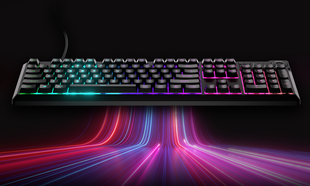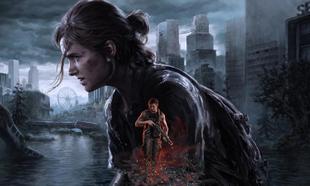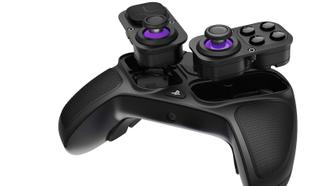Setting the scene for 'Horizon: Call of the Mountain'
The game starts with your character on a serene canoe trip listening to a conversation between the other two people on the boat. What is immediately striking is just how good everything looks – the water shimmering in the river, the diffused light coming through the thick jungle canopy overhead. The sounds of the jungle surround you, and while graphics aren’t completely photorealistic, it does carry over the familiar, colourful, stylized environment from the main entries in the franchise. The sound and graphics create a world into which you are completely immersed.
Surprisingly, tranquillity is frequent in this game. You’ll often find yourself taking time to look out over an expansive vista with no real urgency to progress. There are no quest markers vying for your attention, no boss battle music keeping your heart-rate high, there’s just you and the view in these moments. You’ll be thankful for these moments as they’re usually at the end of a lengthy vertical climb and you’ll need a rest!
The Fall
The climbing mechanic is excellently executed and will feel very familiar to anyone who has been bouldering or rock climbing. Although you don’t actually have to lift yourself, simply having your arms out for a few minutes and stretching to try to reach the next hold still feels like a bit of a workout. The first few falls – and you will fall - in these sections are extremely unnerving, especially if you’ve been playing for a while and feel totally immersed in the game. While they are quite unnerving, you’ll be back in the action in no time due to the fast loading times of the PS5, and if you find it happening too much, there’s an option to turn off falling while climbing.
One Gadget Too Many
One criticism of the climbing is the gadgets. There are too many and each one is slightly cumbersome to use, bringing an unnatural break in the otherwise fluid and natural movements. The vertical rope dart is particularly irritating as you’re often directly below the point you’re trying to throw it to, meaning you have to lean all the way back to see it.
The distances the gadgets can be used at seem to fluctuate significantly depending on circumstances and the general will of the developers. Throw the dart without a target and it falls around a meter from your feet. Have a target and put no strength into your throw and it effortlessly sails through the air. Find another target roughly the same distance away and if it’s not highlighted, no matter how hard or accurate your throw, it’s not going to land.
The variety of settings in the accessibility tab is extensive. There are options for how your character will turn in different situations, and options to help reduce nausea or motion sickness if you’re someone who is prone to it. You can also tweak the difficulty by reducing incoming damage, and speed up combat sections by increasing outgoing damage on a multiplier. For people who feel like their height might limit them in climbing, there’s a climbing reach multiplier to help grab holds just past your ability.
Combat feels very limited compared to 'Zero Dawn' and 'Forbidden West'. You still have your trusty bow with a variety of familiar arrows like blaze, shock, and precision. As well as a sling, but this can only throw rocks, fire, and freeze bombs. Compared to the arsenal available in the other games, this came as a bit of a surprise.
Each fight is set in a makeshift arena, with your character strafing around the outer circumference and your foe rushing or flying throughout. Compared to the fluid "fight your own way" battles of the previous games, this is a bit of a let-down, though not totally unexpected due to the nature of VR. Your range of movement in real life has to be limited, and because of the natural connection between you and your character, it means their movement must be limited too.
The machines you fight will have the same weak spots as you’re used to – shoot a stalker in their big lens/eye for high damage or even a one-shot kill. Repeatedly hit the guns on the back of a Thunderjaw to disable the guns and their combat abilities. Scattered through some of the bigger boss arenas you’ll also notice barrels of blaze which you can blow up for massive damage.
There are only a handful of these encounters throughout the game but they still feel a little repetitive toward the end. There are sufficient resources throughout each level for you to enter each battle with a full suite of special arrows, and you’ll never run out of the basic ones, but if you have to rely on them, the fights can become very tedious.
Your main and only weaponry, the bow and sling, feel comfortable to use but sometimes the bow clips with scenery leading it to bounce around on screen. While this was a rare occurrence it was also a frustrating one. Sometimes the only fix was to put away and take out your bow again costing precious seconds which could mean the difference between life or death.
Aim Assist is helpful most of the time, but you can run into issues when two weak spots are close to each other. The Assist will nine times out of ten choose the one you weren’t aiming for.
So what do we really think?
'Horizon: Call of the Mountain' is a spin-off of the main franchise games, and while our favourite red-headed robo-dino killer does make a brief appearance, you play as a completely different character. This helps explain why you don’t have access to all of the same abilities as Aloy, and allows the game to take you through a story in the same world, but disconnected from Aloy’s mission.
The story is interesting enough to get you invested and short enough that it doesn’t get boring or feel like a burden. The protagonist isn’t particularly engaging but he fits well with the rest of the cast, and the story takes us through his redemption arc. Starting as hated and untrusted, Ryas isn’t seeking forgiveness at the start but by the end he is a willing agent of the forces of good, doing his best to stop the antagonists plan and save the lives of thousands of people. There’s not much else to say without spoilers, but the story is around the same quality as you’d expect from Horizon.
Moving to VR has meant that Horizon lost some of the features that made the franchise great. There is no open world, in fact, there are invisible walls around every corner, and the combat has been stripped back to a surpising level of simplicity. But that doesn’t mean 'Horizon: Call of the Mountain' isn’t worth playing.
The VR world is incredibly well crafted with an amazing level of detail. Varied, beautiful, and desolate locations keep the environments feeling fresh. Movement is fluid and natural, and as you climb higher you can look back at where you’ve just been giving a real sense of progression. While the story could be better, the character design is great and the acting is superb which really helps bring you into the world.
While the game isn’t perfect, and allowing for the limitations of VR, it is remarkable in the way it brings you into the world of Horizon. It pushes the PS5 and VR2 hardware to its limits delivering an experience that will stay with you long after you’ve put the controller down. Most importantly, it really is a game - and not an overblown tech demo. And most importantly for a game, it’s compelling and a lot of fun to play.









































































